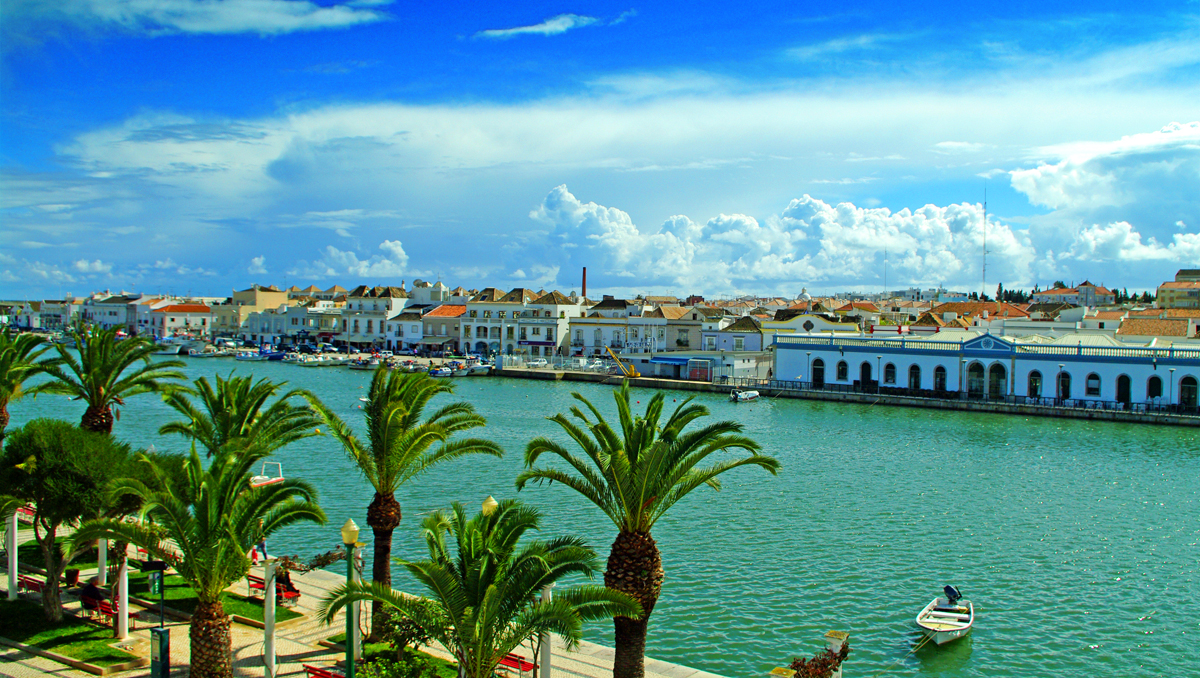Holidays in Tavira: A true sight of a long gone Algarve – that is Tavira, an alluring town cut in half by the tranquil River Gilão. Its riverfront gardens, shaded little plazas, old cobblestone streets and castle ruins maintain Tavira as one of the most remarkable historical places in the Algarve. During your holidays in Tavira you will see for yourself that the town has not yet surrendered to mass-market tourism.

Luckily, the 20th century inflicted little urban disorder on this seaside jewel. In fact, several of its most significant Moorish, Medieval and Renaissance buildings are still standing today. The town also boasts more than thirty five churches, a lot of them dating back from the period between the 16th and the 18th centuries. This epoch signaled the halcyon days of Tavira, a time when the town built up great prosperity thanks to its privileged location and prodigal fish catches. Image: Tuergeist
A compact town, Tavira is also a perfect place to explore by foot. It has two river crossings and one of them is a lovely, seven-arched stone bridge of Moorish origin where sunsets seem a bit more special. It was thought that this bridge was erected by the Romans, but recent archaeological findings dismissed such theory. Besides the charming landmarks, Tavira exhibits a tempting variety of typical restaurants, high-quality hotels and white sand beaches (like Barril Beach and Tavira Island) that make it an outstanding base for discovering eastern Algarve.
What to see during your holidays in Tavira
 Camera Obscura
Camera Obscura: Located at the unmistakable Water Tower, the Camera Obscura provides a pleasant and distinct introduction to you holidays in Tavira. Visit it at the start of your journey. The Camera will offer you a live, all-encompassing image of the town. The guide has a lot of interesting stories to share, and will inform visitors about the historic buildings throughout the town.
 Rua da Liberdade
Rua da Liberdade: During your holidays in Tavira, one of the best experiences is just to walk down the old streets and alleyways to discover gorgeous details, like the little plazas filled with colorful flowers or the splendid 16th century noble houses. One of the best places to start your journey is Rua da Liberdade, Tavira’s main street. Many of its mansions are adorned with glazed tiles, arabic-style latticed doors and curious, pyramidal roof-tops. Such architectural features are unique to Tavira and its environs. They are a fitting testimony to the Moors that inhabited the region between the 8th and 13th centuries.
 Moorish Castle
Moorish Castle: Located in the Old Quarter, this ancient Moorish stronghold was conquered by Portuguese knights in 1239. Nowadays, it is not a whole castle, only the strangely pleasant remnants of one. Much of it was destroyed in the Great Earthquake of 1755. However, the ramparts offer impressive views over Tavira and the outlying shoreline. The stonewalls wrap up a little oasis of green freshness, with huge poinsettias, rich lemon trees, colorful hibiscus and oleander. Beware of its unfenced stairs. Mon-Fri 9am-5pm, Sat-Sun and holidays 10am-5pm.
 Igreja de Santa Maria do Castelo
Igreja de Santa Maria do Castelo: From the Castle it is possible to look directly onto this church. Its distinctive clock tower is a very well-known landmark in Tavira. The Gothic portal is the sole original 13th architectural element to have survived the enormously destructive 1755 Earthquake. Remember the knights that conquered the Moorish Castle? The most prominent of them are buried inside tombs to either side of the altar. On the left-hand side is the Moor’s arch-rival Dom Paio Peres Correia, who drove the Almohad Caliphate out of Tavira in 1242, ending more than 500 years of (enlightened) domination.
 Igreja da Misericórdia
Igreja da Misericórdia: Located near the river, this 16th century building is one of the most important Renaissance creations in the Algarve. It has a beautifully carved portico, a striking altar, fine gilded woodwork and superb blue-and-white
azulejos portraying well-known religious themes.
 Convento da Graça
Convento da Graça: This brightly painted convent has been renovated into a luxury, historical hotel (known as ‘
Pousada‘). The religious building was erected in the 16th century, and it is marked by the seamless amalgamation of Renaissance and Baroque features.
 Praça da República
Praça da República: You’ll be thirsty and hungry by the end of your journey. Give yourself a break in Praça da República, the main square in Tavira. Located by the old bridge, this central spot has a wide choice of cafés. The best one is probably Veneza, with its vast array of typical Algarvian cakes and pastries. Relax, because the service is not lightning fast (far from it). Sit on the characteristic ‘calçada’ pavement enjoying the sunny weather and delicious sweets.
Enjoy your holidays in Tavira!
